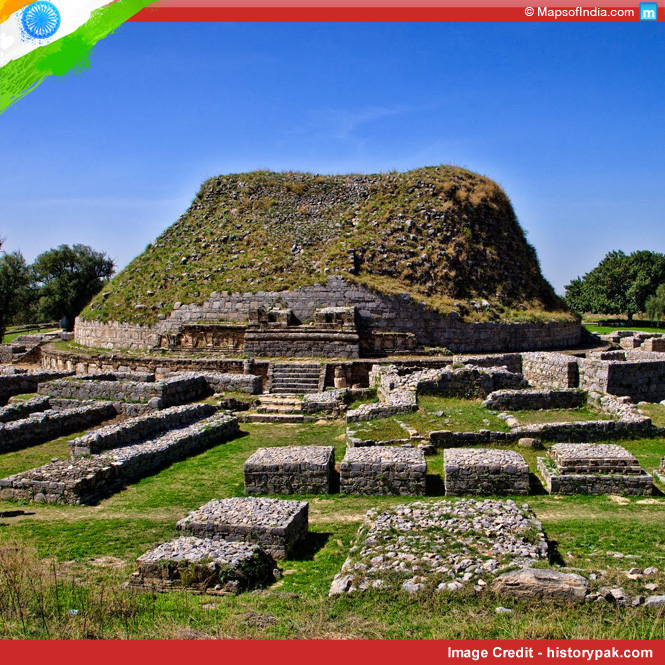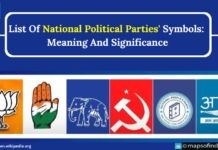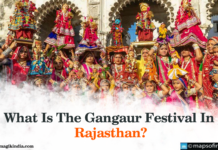
As a visitor, when you step into Taxila, you are taken to an altogether different world that was alive during 5th century. Here you come face-to-face with Lord Buddha, Alexander of Macedonia, Emperor Asoka and Emperor Kanishka.
Taxila was conquered by Alexander in 327 BC and later on came under the rule of the Mauryan dynasty. Under the king Asoka, the city touched its peak in terms of development. Taxila after this saw the most creative period under the rule of Gandhara. In the next 200 years, Taxila became a center of great learning. But as everything is bound to have an end, the Buddhist monasteries and many stupas at Taxila were destroyed on a large scale by the Hephthalites (nomadic unions in Central Asia) and, after this, the city was never able to recover.
Exploring Taxila is a great experience in itself. You will find Gandhara sculptures, endless images of Lord Buddha, and the remarkable ruins of Taxila. The ruins are well preserved. You can see well laid out streets, houses, stupas and great palaces, etc.
Historically, Taxila is an immensely significant place for Hindus and Buddhists and currently it is an important archaeological site. Taxila, before Partition, was located in India, but the city is now in the Rawalpindi District of Punjab, Pakistan. The city is the top tourist destination in Pakistan. Taxila was excavated by Sir John Hubert Marshall (British Archaeologist) in 1920s who at the time of excavation was the Director General of the Indian Archaeological Survey (1902-31).
Taxila ruins can be divided into three parts or major cities and these parts belonged to different time period. Bhir Mound is the earliest city and belonged to the 6th century BC. It looks very primitive from its irregular streets. Sirkap that is located on the opposite side of the Tamara stream was built in the 2nd century BC. It is a well planned city. The streets are wide and fortification looks very strong and impressive. The Kushan rulers constructed the last city of Taxila that is located at Sirsukh. Though it has not been completely excavated but this is also a well-built city.
Apart from this, there are many structural remains of Taxila that include the Jandial and Pippala temples, the Mohra Moradu and Jaulian monasteries and Kunala stupas. But it seems that more of these kinds are still waiting to be excavated.
Generally, a day seems small to visit all these historical places. But if you can manage, then do visit Dharmarajika Stupa located at a distance of about three kilometres from the Taxila Museum. This stupa has one main building, a monastery area and many small chapels. During excavation lots of gems, gold and silver coins were discovered from this place that are now kept in the Taxila Museum.
Associated Legends
From different historical investigations, it has been found that Taxila may have dated back to the 5th Century BCE. As per the Indian epic, Ramayana, the city name Takṣaśilā came from word taksa. Taksa was the son of Bharata and Mandavi. Bharata was the brother of Lord Rama. It is believed that Taksa was the first ruler of the kingdom Taksa Khanda and founder of the city Takṣaśilā.
But there is another story behind Taxila that was given by Damodar Dharmanand Kosambi. As per this, the variant of the name Takṣaśilā is very closely related to Taksaka that in Sanskrit means ‘carpenter’. In ancient India, this was another name given to the Nagas.
In Buddhist literature, the Jatakas have details of Taxila that were written in Sri Lanka around the 5th century. In this text, Taxila has been mentioned as the capital of the kingdom of Gandhara and a great learning center.
Then there was the Chinese monk Faxian who visited Taxila in 450 CE and his visit has been mentioned in his writings. Another famous monk from China, Hieun Tsang has also visited Taxila in during his travel to India in 630-643.
Famous Taxila University
The city was very popular for the university at Taxila, a renowned center of education in ancient India. Now the university’s ruins are located at a distance of twenty miles from the modern city of Rawalpindi. At the time when this university was active, about 10,500 students from different parts of India and all across the world studied there. In this university, more than sixty different disciplines were taught including science, medicine, mathematics, astronomy, music, philosophy, religion etc. But the study of medicine was the most advanced in this university. Students used to enter the university at the age of sixteen. Though this university was not as organized as the university at Nalanda, Bihar, pupils used to stay with their teachers for education. The pupil either would pay for his stay or lend services to the teacher and his family.
Chanakya (Kautilya) an advisor to Chandragupta Maurya was teacher at this university. Taxila produced many brilliant minds such as Panini (the great Sanskrit grammarian), Chandragupta Maurya (the great ruler), Kautilya (Chanakya) and Charaka (a popular physician of ancient India).
During the rule of Asoka, Taxila was famous as a Buddhist centre. Also during his reign, many roads were constructed for trade and there was one main road connecting Pataliputra with Taxila.
The Taxila Museum
A must-visit place apart from the ruins is the archaeological museum, the Taxila Museum. Here a great collection of coins, gems, jewellery, caskets along with many other artifacts are on display. But the main attraction of the museum is the stone and stucco – an exquisite Gandhara sculpture. Also there is an impressive collection of different forms of Lord Buddha.
If you want to visit Taxila, then hire a taxi for a day as the entire site is really very huge. You can also hire a local guide as the guide can show the highlights and explain the historical importance of the place.
Related Information :




